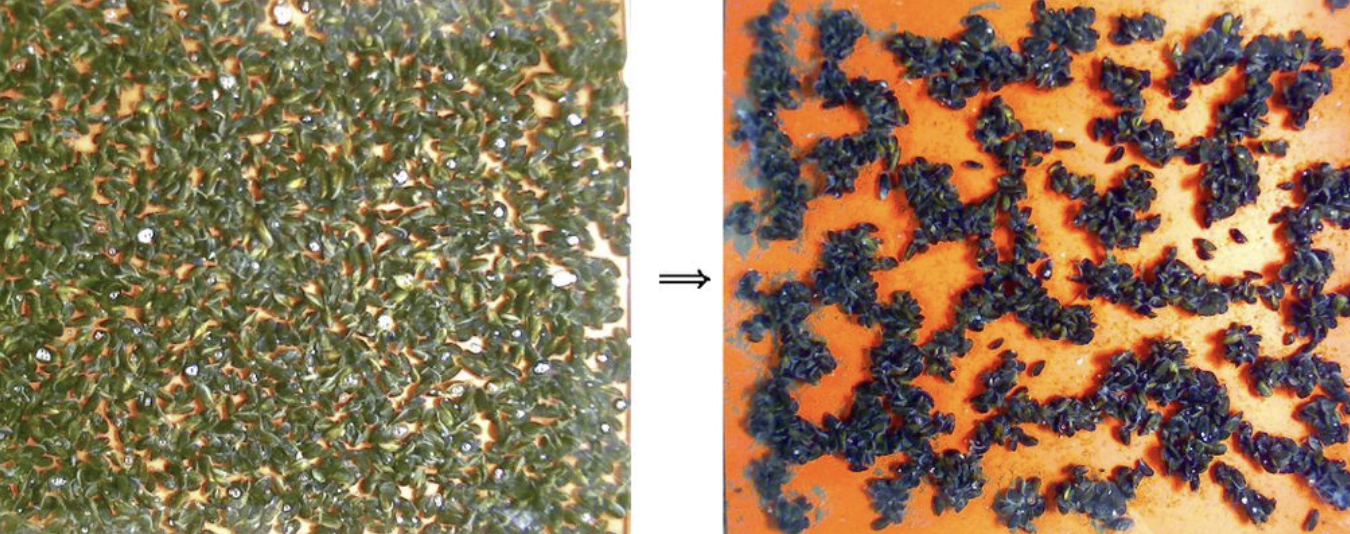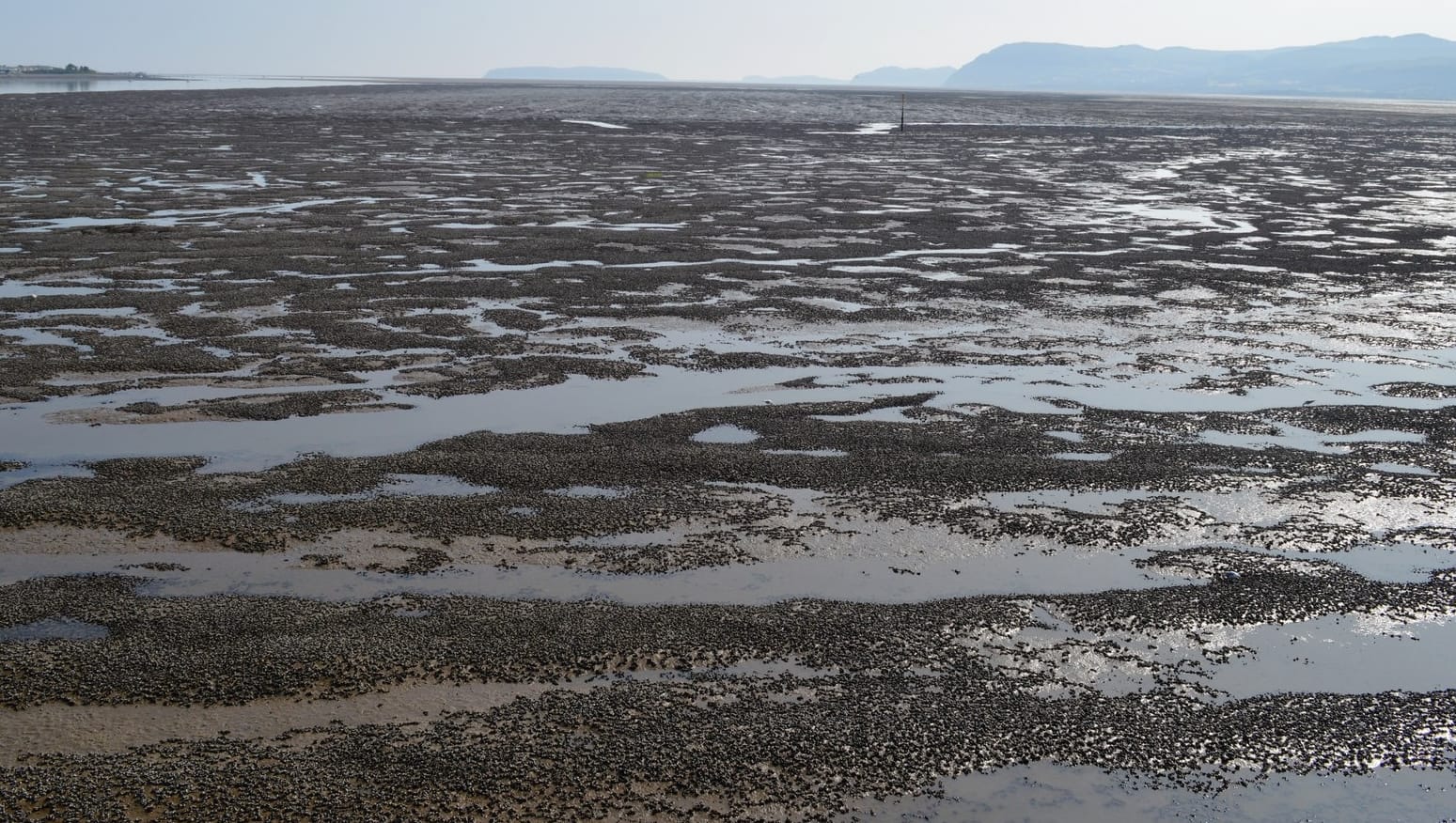Out-Musseled by Microplastics
Mussel beds are biodiversity hotspots but microplastics could be disrupting their formation.

If you eat seafood, microplastics are likely in your diet. Seafoods that are consumed whole, like mussels, have higher levels of microplastics. This is because since marine organisms ingest microplastics, it’s their guts where the microplastics’ journey in the food chain begins.
We don’t know for sure how bad that is for us: most studies of the impact of microplastics on human health are still early. Microplastics don't impact individual mussels. That’s because they poop most of it out. They are so good at it that mussels have been proposed as a natural technology to remove microplastics from oceans.
However, microplastic pollution may be hurting mussels in other ways. In the wild, mussels arrange themselves in beautiful and intricate patterns that underlie the resilience of mussel beds. Now, researchers have found that microplastics are disrupting these patterns.
Where do mussel bed patterns come from?
In nature, patterns often emerge on their own. Think of a large number of birds flocking in a coordinated manner or fireflies flashing in sync. No conductor directs them. Instead, each bird or firefly responds to cues from a few of its neighbors and larger patterns emerge from these local interactions.
That’s also how mussels self-organize. At a small scale, mussels connect to each other and the surface via byssal threads. These threads are highly adhesive and strong and protect the mussels from waves. Because mussels that stick together are better off, there is positive feedback that pushes mussels to aggregate into clusters that are a few centimeters wide.

Cooperation isn't the only driving force. Mussels also compete with each other for the same algal food sources. This means too many of them together would be detrimental to all of them. There is negative feedback, operating on a larger scale, that ensures that the small-scale clusters are thus evenly placed in bands that are a few meters wide. This is similar to how trees naturally space themselves to avoid competing for the same resources.

Mussels, therefore, receive two kinds of feedback. The positive feedback on the small scale promotes clustering, whereas the negative feedback on the large scale spaces the clusters. The interaction between the positive and the negative feedback creates the characteristic mussel bed pattern. The flow of the algae provides a direction to the pattern.
Microplastics disrupt mussel bed formation
In mussel beds, large-scale patterns rely on small-scale patterns which, in turn, rely on the integrity of byssal threads. In a new study published in The Science of The Total Environment, researchers found that microplastics disrupt the small-scale patterning in mussels by preventing the formation of the byssal threads.
The researchers kept mussels in glass arenas that were 30 centimeters in diameter. Some of these arenas did not have any microplastics. Other arenas had microplastics leached from plastic pellets collected in either France or Portugal. Each arena had a random assortment of 120 mussels, mimicking their density in the wild.
The researchers then left them undisturbed for a day. Mussels in arenas without microplastics arranged themselves in patterns similar to those seen in nature. Mussels in arenas with microplastics from pellets collected in Portugal also formed these patterns. On the contrary, mussels in arenas with microplastics from pellets collected in France did not form any patterns.
Next, the researchers carefully removed the mussels from the arenas, leaving behind only the byssal threads. This allowed them to quantify the amount of byssal thread in each arena. Compared to mussels in unpolluted arenas and arenas with Portuguese microplastics, mussels exposed to microplastics of French origin produced few byssal threads.
But what explains the difference between plastic waste collected in the oceans of France and Portugal? It’s the quality of the seawater collected.
The French samples came from the eastern English Channel which is known to have high levels of heavy metal pollution. In contrast, the Portuguese samples came from the relatively pristine coastal waters of southern Portugal. The researchers chemically analyzed the samples used in the arenas and found that the French plastic pellets had higher heavy metal content than the Portuguese ones.
This shows that microplastics impede mussel pattern formation by bringing heavy metals into the picture. Compared to chunkier plastics, microplastics have a greater surface area to ratio. This means there is more room where stuff, in this case heavy metals, can stick to microplastics.
It’s unclear how the heavy metals disrupt byssal threads. However, this research illustrates that different pollutants acting together can have disastrous ecological consequences for ecosystems.
Why do mussel beds matter?
Mussel beds are a vital part of marine ecosystems. They just don’t make individual mussels resilient to environmental changes but provide a home to an incredible range of marine biodiversity. Mussels anchor to different kinds of seabeds, acting as a bedrock for species around them.
Small marine organisms, such as many corals and insects, attach themselves to mussel beds. Many fish species lay their eggs and hide their juveniles there. In turn, these species draw other species that feed on them. And because mussels clean water, they help more light penetrate the water and support species that depend on light. Much like trees in a city, they are cooler than rocks on the ocean floor. This way, they provide a refuge from the heat on warm days.
For these and other reasons, mussel beds are biodiversity hotspots and harbor more marine species than mussel-less waters around them. If mussel beds are lost, these species will be the most impacted. However, their benefits, and the consequences if they are lost, are more widespread.
Like mangroves, they stabilize the seafloor. This prevents flooding and coastal erosion. Lastly, mussel beds are great carbon sinks, which means they are highly effective at removing carbon from the atmosphere.
Mussel farming could be a sustainable solution for improving both marine biodiversity and climate resilience. Further research is needed to better understand the ramifications of marine plastics pollution on mussel beds as well as marine ecosystems in general.
In the oceans, especially around the coasts, there is a battle between mussels and microplastics. If scientists can tip this battle in the favor of mussels, it will be a huge win for marine and coastal resilience.
